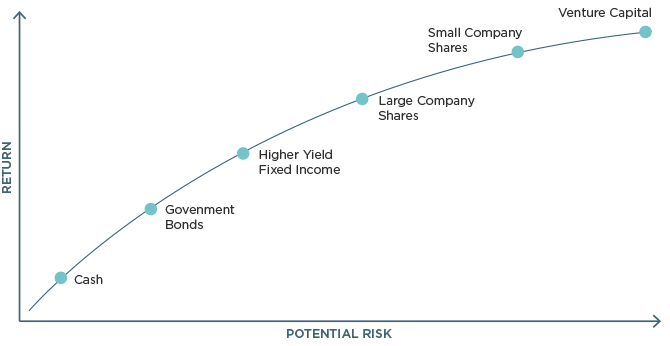Address
304 North Cardinal St.
Dorchester Center, MA 02124
Work Hours
Monday to Friday: 7AM - 7PM
Weekend: 10AM - 5PM

In the world of investment and finance, the concept of ‘risk versus reward’ is fundamental. It’s a principle that underlies every financial decision, from buying stocks to saving for retirement. Understanding this concept is crucial for anyone looking to make informed and effective financial choices.
The trade-off between risk and reward refers to the balance that investors must find between the desire for the lowest possible risk and the highest possible return. Generally, the higher the risk, the greater the potential reward. Conversely, lower-risk investments typically yield lower returns. This trade-off is at the heart of investment strategies and financial planning.
For example, government bonds are considered low-risk but offer modest returns, while stocks are higher-risk with the potential for significant returns.

Difference Between Risk and Return Trade-Off
While the terms ‘risk’ and ‘return’ are often used interchangeably in discussing this trade-off, they are distinct concepts. ‘Risk’ refers to the potential to lose some or all of the original investment. It’s a measure of the uncertainty surrounding the return that an investment will generate. ‘Return’, on the other hand, is the gain or loss on an investment over a specified period, usually expressed as a percentage.
The risk-return trade-off, therefore, is about balancing the potential risks of loss against the potential for gains.
The relationship between risk and return is often represented as a positive correlation. High-risk investments, such as stocks, have the potential for higher returns, but also higher potential for loss. Low-risk investments, like treasury bonds, typically offer lower returns but also lower chances of loss.
This correlation is why investors seeking higher returns must be willing to accept more risk. Conversely, those seeking to minimize risk must accept lower returns.
The 1:3 risk-reward ratio is a common principle in investment and trading strategies. It means that for every unit of risk taken, there should be a potential for three units of reward. For example, if you risk $1, the potential reward should be $3. This ratio is used to ensure that the potential rewards of an investment or trade justify the risks involved.
Investors use this ratio to make calculated decisions, ensuring that the potential upside of an investment significantly outweighs the potential downside. This approach helps in balancing the risk-return trade-off by quantifying the risk and aligning it with an appropriately scaled reward expectation.
Tools to Improve the Risk-Reward Ratio
– Risk Assessment Tools: Tools like Value at Risk (VaR) and Standard Deviation help in quantifying the risk associated with different investments. These tools provide a statistical measure of the potential losses in an investment.
– Portfolio Optimization Software: This software uses mathematical and statistical methods to identify the most efficient portfolio based on a given level of risk. It helps in balancing the portfolio to achieve the desired risk-reward ratio.
– Stop Loss Orders: This is a tool used primarily in trading. A stop loss order automatically sells an asset when it reaches a certain price, limiting potential losses. This tool helps in maintaining the risk-reward ratio by defining the maximum risk beforehand.
– Technical Analysis: Traders use technical analysis to identify potential entry and exit points in the market. By analyzing historical data and market trends, investors can make more informed decisions, improving the chances of a favorable risk-reward outcome.
Understanding the risk-return tradeoff is essential for anyone involved in investment and financial planning. It’s about finding the right balance between the desire for safety and the desire for growth. By comprehensively understanding the relationship between risk and reward, and applying principles such as the 1:3 risk-reward ratio, investors can make more informed decisions that align with their financial goals and risk tolerance.
Remember, successful investing isn’t just about picking winners; it’s about managing risk in a way that optimizes the potential for reward.
To discuss business ventures or partnership opportunities, please direct your inquiries to Rodrigo Munhoz, CFA, at contact@rmzinvesting.com.